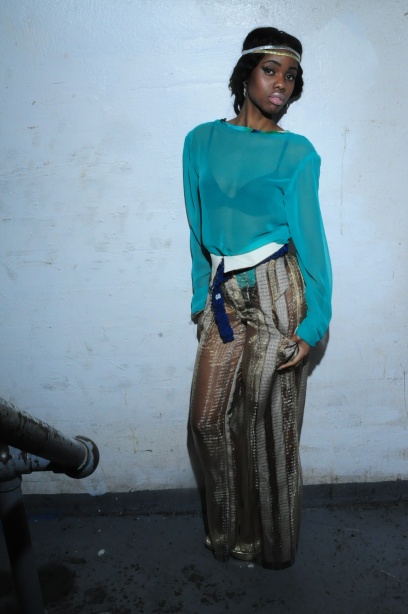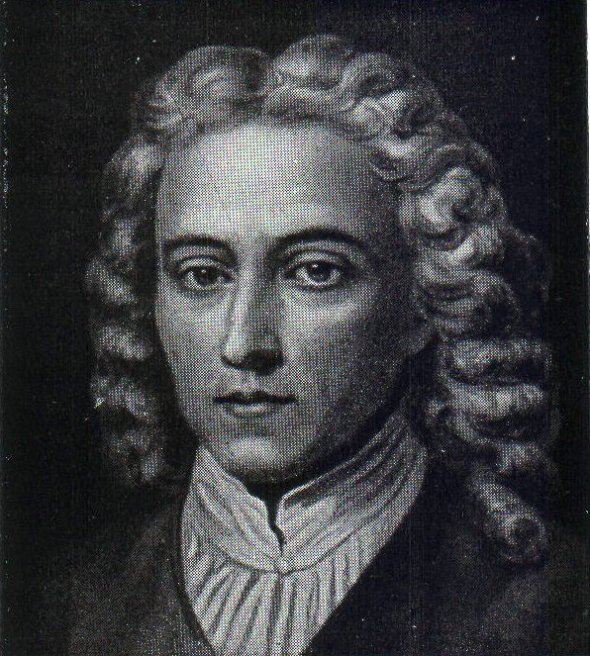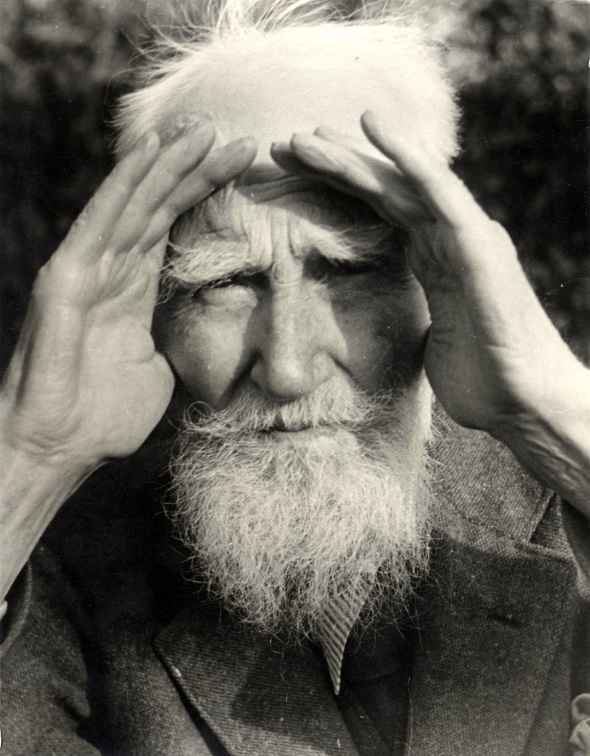
B. Feb. 27, 1932 & D. March 23 2011
Elizabeth Rosemond “Liz” Taylor, DBE, was an English-born
American actress. Beginning as a child star, as an adult she came to
be known for her acting talent and beauty, and had a much publicised private
life, including eight marriages and several near-death experiences. Taylor was
considered one of the great actresses of Hollywood’s Golden Age. The
American Film Institute named Taylor seventh on its Female Legends list.
Elizabeth Rosemond Taylor was born in Hampstead, a wealthy district of
north west London, the second child of Francis Lenn Taylor and
Sara Viola Warmbrodt (1895–1994), who were Americans residing in England. Taylor’s
older brother, Howard Taylor, was born in 1929. Her parents were originally from Arkansas City, Kansas.
Francis Taylor was an art dealer, and Sara was a former actress whose stage name was
“Sara Sothern.” Sothern retired from the stage when she and Francis married in
1926 in New York City. Taylor’s two first names are in honor of her paternal
grandmother, Elizabeth Mary (Rosemond) Taylor.
A dual citizen of the United Kingdom
and the United States, she was born a British subject through her birth on British soil and
an American citizen through her parents. She reportedly sought,
in 1965, to renounce her United States citizenship, to wit: “Though never accepted
by the State Department, Liz renounced in 1965. Attempting to shield much of her
European income from U.S. taxes, Liz wished to become solely a British citizen.
According to news reports at the time, officials denied her request when she
failed to complete the renunciation oath, refusing to say that she
renounced ‘all allegiance to the United States of America.'”
At the age of three, Taylor began taking ballet lessons with Vaccani. Shortly
before the beginning of World War II, her parents decided to return to the United States
to avoid hostilities. Her mother took the children first, arriving in New York in April 1939,
while her father remained in London to wrap up matters in the art business, arriving in November.
They settled in Los Angeles, California, where Sara’s family, the Warmbrodts, were then living.
Through Hedda Hopper, the Taylors were introduced to Andrea Berens, a wealthy
English socialite and also fiancée of Cheever Cowden, chairman and major
stockholder of Universal Pictures in Hollywood. Berens insisted that
Sara bring Elizabeth to see Cowden who, she was adamant, would
be dazzled by Elizabeth’s breathtaking dark beauty; she was
born with a mutation that caused double rows of eyelashes,
which enhanced her appearance on camera.
Metro-Goldwyn-Mayer soon took interest in the
British youngster as well but she failed to secure
a contract with them after an informal audition
with producer John Considine had shown that she
couldn’t sing. However, on September 18, 1941,
Universal Pictures signed Elizabeth to a six-month
renewable contract at $100 a week.
Taylor appeared in her first motion picture at the age of nine in
There’s One Born Every Minute, her only film for Universal Pictures. Less than six
months after she signed with Universal, her contract was reviewed by Edward Muhl, the studio’s
production chief. Muhl met with Taylor’s agent, Myron Selznick (brother of David), and
Cheever Cowden. Muhl challenged Selznick’s and Cowden’s constant support of Taylor:
“She can’t sing, she can’t dance, she can’t perform. What’s more, her mother has to be
one of the most unbearable women it has been my displeasure to meet.”
Universal cancelled Taylor’s contract just short of her tenth birthday in February 1942.
Nevertheless on October 15, 1942, Metro-Goldwyn-Mayer signed Taylor to $100 a week for up to
three months to appear as “Priscilla” in the film Lassie Come Home.
Lassie Come Home featured child star Roddy McDowall, with
whom Taylor would share a lifelong friendship. Upon its release in
1943, the film received favourable attention for both McDowall and Taylor.
On the basis of her performance in Lassie Come Home MGM signed Taylor
to a conventional seven-year contract at $100 a week but increasing at
regular intervals until it reached a hefty $750 during the seventh year.
Her first assignment under her new contract at MGM was a loan-out to
20th Century Fox for the character of Helen Burns in a film version of the
Charlotte Bronte novel Jane Eyre (1944). During this period she also
returned to England to appear in another Roddy McDowall picture for
MGM, The White Cliffs of Dover (1944). But it was Taylor’s persistence in
campaigning for the role of Velvet Brown in MGM’s National Velvet that
skyrocketed Taylor to stardom at the tender age of 12.
Taylor’s character, Velvet Brown, is a young girl who trains her beloved
horse to win the Grand National. National Velvet, which also costarred
beloved American favorite Mickey Rooney and English newcomer Angela Lansbury,
became an overwhelming success upon its release in December 1944. Many years later
Taylor called it “the most exciting film” she had ever made, and the film changed her
life forever. Although it vastly increased her star power, many of her back problems were
traced to when she hurt her body falling off a horse during its filming.
National Velvet grossed over US$4 million at the box office and
Taylor was signed to a new long-term contract that raised her salary
to $30,000 per year. To capitalize on the box office success of Velvet,
Taylor was shoved into another animal opus, Courage of Lassie, in which
a different dog named “Bill”, cast as an Allied combatant in World War II,
regularly outsmarts the Nazis, with Taylor going through another outdoors
role. The 1946 success of Courage of Lassie led to another contract
drawn up for Taylor earning her $750 per week, her mother $250,
as well as a $1,500 bonus. Her roles as Mary Skinner in a loan-out
to Warner Brothers’ Life With Father (1947), Cynthia Bishop in Cynthia (1947),
Carol Pringle in A Date with Judy (1948) and Susan Prackett in
Julia Misbehaves (1948) all proved to be successful.
Her reputation as a bankable adolescent star and nickname of “One-Shot Liz”
(referring to her ability to shoot a scene in one take) promised her a full and bright career
with Metro. Taylor’s portrayal as Amy, in the American classic Little Women (1949) would prove to
be her last adolescent role. In October 1948, she sailed aboard the RMS Queen Mary
travelling to England where she would begin filming on Conspirator, in
which she would play her first adult role.
Unlike other child actors, Taylor easily transitioned to adult roles. Before
Conspirator’s 1949 release, a Time cover article called her “a jewel of
great price, a true star sapphire”, and the leader among Hollywood’s
next generation of stars such as Montgomery Clift, Kirk Douglas, and
Ava Gardner. The film failed at the box office, but 16-year-old
Taylor’s portrayal of a 21-year-old debutante who unknowingly
marries a communist spy played by 38-year-old Robert Taylor,
was praised by critics for her first adult lead in a film. Taylor’s
first picture under her new salary of $2,000 per week was
The Big Hangover (1950), both a critical and box office failure,
that paired her with screen idol Van Johnson. The picture also
failed to present Taylor with an opportunity to exhibit
her newly realized sensuality.
Her first box office success in an adult role came as Kay Banks in the romantic
comedy Father of the Bride (1950), alongside Spencer Tracy and Joan Bennett.
The film spawned a sequel, Father’s Little Dividend (1951), which Taylor’s costar
Spencer Tracy summarised with “boring… boring… boring”. The film did well at the
box office but it would be Taylor’s next picture that would set the course for her career
as a dramatic actress. In late 1949, Taylor had begun filming George Stevens’
A Place In The Sun. Upon its release in 1951, Taylor was hailed for her performance as
Angela Vickers, a spoiled socialite who comes between George Eastman (Clift) and
his poor, pregnant factory-working girlfriend Alice Tripp (Shelley Winters).
The film became the pivotal performance of Taylor’s career as critics acclaimed it as a
classic, a reputation it sustained throughout the next 50 years of cinema history.
The New York Times’ A.H. Weiler wrote, “Elizabeth’s delineation of the rich and
beauteous Angela is the top effort of her career”, and the Boxoffice reviewer
unequivocally stated “Miss Taylor deserves
an Academy Award”.
Taylor became increasingly unsatisfied with the roles being offered to her
at the time. While she wanted to play the lead roles in The Barefoot Contessa
and I’ll Cry Tomorrow, MGM continued to restrict her to mindless and
somewhat forgettable films such as: a cameo as herself in Callaway Went Thataway
(1951), Love Is Better Than Ever (1952), Ivanhoe (1952),
The Girl Who Had Everything (1953) and Beau Brummel (1954). She had
wanted to play the role of Lady Rowena in Ivanhoe, but the part was given to
Joan Fontaine. Taylor was given the role of Rebecca. When Taylor
became pregnant with her first child, MGM forced her through
The Girl Who Had Everything (even adding two hours to her daily
work schedule) so as to get one more film out of her before she
became too heavily pregnant.
Taylor lamented that she needed the money, as she had just bought
a new house with second husband Michael Wilding and with a child on the way things
would be pretty tight. Taylor had been forced by her pregnancy to turn down Elephant Walk
(1954), though the role had been designed for her. Vivien Leigh, almost two decades Taylor’s
senior, but to whom Taylor bore a striking resemblance, got the part and went to Ceylon to
shoot on location. Leigh suffered a nervous breakdown during filming, and Taylor reclaimed the role
after the birth of her child Michael Wilding, Jr. in January 1953.
portrayed Louise Durant, a beautiful rich girl in love with a
temperamental violinist (Vittorio Gassman) and an earnest young
pianist (John Ericson). A film critic for the New York Herald Tribune
wrote: “There is beauty in the picture all right, with Miss Taylor glowing
into the camera from every angle… but the dramatic pretenses are
weak, despite the lofty sentences and handsome manikin poses.”
Taylor’s fourth period picture, Beau Brummell, made just after
Elephant Walk and Rhapsody, cast her as the elaborately costumed Lady Patricia,
which many felt was only a screen prop—a ravishing beauty whose sole purpose was to
lend romantic support to the film’s title star, Stewart Granger. The Last Time I Saw Paris
(1954) fared only slightly better than her previous pictures, with Taylor being reunited
with The Big Hangover costar Van Johnson. The role of Helen Ellsworth Willis was based on
that of Zelda Fitzgerald and, although pregnant with her second child, Taylor went ahead with the
film, her fourth in twelve months. Although proving somewhat successful
at the box office, she still yearned for meatier roles.
Following a more substantial role opposite Rock Hudson and
James Dean in George Stevens’ epic Giant (1956), Taylor was
nominated for an Academy Award for Best Actress four years in
a row for Raintree County (1957) opposite Montgomery Clift;
Cat on a Hot Tin Roof (1958) opposite Paul Newman;
Suddenly, Last Summer (1959) with Montgomery Clift,
Katharine Hepburn and Mercedes McCambridge; and finally
winning for BUtterfield 8 (1960), which co-starred then husband Eddie Fisher.
In 1960, Taylor became the highest paid actress up to that time when she
signed a one million dollar contract to play the title role in 20th Century Fox’s
lavish production of Cleopatra,[14] which would eventually be released in 1963.
During the filming, she began a romance with her future husband Richard Burton, who
played Mark Antony in the film. The romance received much attention from the tabloid
press, as both were married to other spouses at the time. By working overtime,
Taylor received more than $2 million for her role.
Her second Academy Award, also for Best Actress in a Leading Role,
was for her performance as Martha in Who’s Afraid of Virginia Woolf? (1966),
playing opposite then husband Richard Burton. Taylor and Burton would
appear together in six other films during the decade –
The V.I.P.s (1963), The Sandpiper (1965), The Taming of the Shrew (1967),
Doctor Faustus (1967), The Comedians {1967} and Boom! (1968).
Taylor appeared in John Huston’s Reflections in a Golden Eye (1967)
opposite Marlon Brando (replacing Montgomery Clift who died before
production began) and Secret Ceremony (1968) opposite Mia Farrow.
However, by the end of the decade her box-office drawing power
had considerably diminished, as evidenced by the failure of
The Only Game in Town (1970), with Warren Beatty.
Taylor continued to star in numerous theatrical films throughout the 1970s, such
as Zee and Co. (1972) with Michael Caine, Ash Wednesday (1973), The Blue Bird (1976)
with Jane Fonda and Ava Gardner, and A Little Night Music (1977). With then-husband
Richard Burton, she co-starred in the 1972 films Under Milk Wood and Hammersmith Is Out,
and the 1973 made-for-TV movie Divorce His, Divorce Hers. A chain smoker from an early age,
Taylor feared she had lung cancer in October 1975 after an X-ray showed spots on her lungs;
however, she was later found not to have the disease.
Taylor starred in the 1980 mystery film The Mirror Crack’d, based
on an Agatha Christie novel. In 1985, she played movie gossip columnist
Louella Parsons in the TV film Malice in Wonderland opposite
Jane Alexander, who played Hedda Hopper. Taylor appeared in the
miniseries North and South. Her last theatrical film was 1994’s The Flintstones.
In 2001, she played an agent in the TV film These Old Broads. She appeared on a
number of television series, including the soap operas General Hospital and
All My Children, as well as the animated series The Simpsons—once as herself,
and once as the voice of Maggie Simpson, uttering one word “Daddy”.
Taylor also acted on the stage, making her Broadway and West End debuts in 1982
with a revival of Lillian Hellman’s The Little Foxes. She was then in a production
of Noel Coward’s Private Lives (1983), in which she starred with her former husband,
Richard Burton. The student-run Burton Taylor Theatre in Oxford was named for the
famous couple after Burton appeared as Doctor Faustus in the Oxford University
Dramatic Society (OUDS) production of the Marlowe play. Taylor played the ghostly,
wordless Helen of Troy, who is entreated by Faustus to “make [him]
immortal with a kiss”. In the 1980s, she received
treatment for alcoholism.
In March 2003 Taylor declined to attend the 75th Annual Academy
Awards, due to her opposition to the Iraq war. She publicly condemned
then US President George W. Bush for calling on Saddam Hussein to leave
Iraq, and said she feared the conflict would lead to “World War III”.
Taylor is known to have smoked cigarettes into her mid-fifties.
In November 2004, she announced that she had been diagnosed with
congestive heart failure, a progressive condition in which the
heart is too weak to pump sufficient blood throughout the
body, particularly to the lower extremities: the ankles and feet.
She broke her back five times, had both her hips replaced, survived
a benign brain tumor operation and skin cancer, and faced life-
threatening bouts with pneumonia twice, one of which (1961),
resulted in an emergency tracheotomy. Towards the end of her
life she was reclusive and sometimes failed to make scheduled
appearances due to illness or other personal reasons. She used a
wheelchair and when asked about it stated that she had osteoporosis
and was born with scoliosis.
In 2005, Taylor was a vocal supporter of her friend Michael Jackson in his trial
in California on charges of sexually abusing a child.[26][27] He was eventually acquitted when
the prosecution collapsed due to a lack of concrete evidence. On 30 May 2006,
Taylor appeared on Larry King Live to refute the claims that she had been ill,
and denied the allegations that she was suffering from Alzheimer’s disease
and was close to death.
In late August 2006, Taylor decided to take a boating trip to
help prove that she was not close to death. She also decided to
make Christie’s auction house the primary place for selling her
jewelry, art, clothing, furniture and memorabilia.[29] Six months later,
the February 2007 issue of Interview magazine was devoted entirely
to Taylor. It celebrated her life, career and her upcoming 75th birthday.
On 5 December 2007, California Governor Arnold Schwarzenegger and California
First Lady Maria Shriver inducted Taylor into the California Hall of Fame,
located at The California Museum for History, Women and the Arts.
Taylor was in the news in 2007 for a rumored ninth marriage to her companion
Jason Winters, which she dismissed as a rumour. However, she was quoted
as saying, “Jason Winters is one of the most wonderful men I’ve ever known and
that’s why I love him. He bought us the most beautiful house in Hawaii and we visit
it as often as possible,” to gossip columnist Liz Smith. Winters accompanied
Taylor to Macy’s Passport HIV/AIDS 2007 gala, where Taylor was honoured with
a humanitarian award. In 2008, Taylor and Winters were spotted celebrating the
4th of July on a yacht in Santa Monica, California. The couple attended the Macy’s
Passport HIV/AIDS gala again in 2008.
On December 1, 2007, Taylor acted on-stage again, appearing
opposite James Earl Jones in a benefit performance of the
A. R. Gurney play Love Letters. The event’s goal was to raise
$1 million for Taylor’s AIDS foundation. Tickets for the show
were priced at $2,500, and more than 500 people attended.
The event happened to coincide with the 2007 Writers Guild of America strike
and, rather than cross the picket line, Taylor requested a “one night dispensation.
” The Writers Guild agreed not to picket the Paramount Pictures lot
that night to allow for the performance.
Taylor had a passion for jewelry. She was a client of well-known jewelry
designer Shlomo Moussaieff. Over the years she owned a number of well-known
pieces, two of the most talked-about being the 33.19-carat (6.64 g) Krupp
Diamond and the 69.42-carat (13.88 g) pear-shaped Taylor-Burton Diamond, which
were among many gifts from husband Richard Burton. Taylor also owned the 50-carat (10 g)
La Peregrina Pearl, purchased by Burton as a Valentine’s Day present in 1969. The pearl
was formerly owned by Mary I of England, and Burton sought a portrait of Queen Mary
wearing the pearl. Upon the purchase of such a painting, the Burtons discovered that the
British National Portrait Gallery did not have an original painting of Mary, so they
donated the painting to the Gallery. Her enduring collection of jewelry has been
documented in her book My Love Affair with Jewelry (2002) with photographs by
the New York photographer John Bigelow Taylor (no relation).
Taylor started designing jewels for The Elizabeth Collection, creating
fine jewelry with elegance and flair. The Elizabeth Taylor collection by
Piranesi is sold at Christie’s. She also launched three perfumes, “Passion”,
“White Diamonds”, and “Black Pearls”, which, together, earn an estimated
US$200 million in annual sales. In fall 2006, Taylor celebrated the 15th
anniversary of her White Diamonds perfume, one of the top 10 best selling
fragrances for more than the past decade.
Taylor devoted much time and energy to AIDS-related charities and
fundraising. She helped start the American Foundation for AIDS Research (amfAR)
after the death of her former costar and friend, Rock Hudson. She also created
her own AIDS foundation, the Elizabeth Taylor Aids Foundation (ETAF). By 1999,
she had helped to raise an estimated US$50 million to fight the disease. In 2006,
Taylor commissioned a 37-foot (11 m) “Care Van” equipped with examination tables
and X Ray equipment and also donated US$40,000 to the New Orleans Aids task force, a
charity designed for the New Orleans population with AIDS and HIV. The donation of the
van was made by the Elizabeth Taylor HIV/AIDS Foundation and Macy’s.
In the early 1980s, Taylor moved to Bel Air, Los Angeles, California, which was her
residence until her death. She also owned homes in Palm
Springs, London and Hawaii.
Taylor was a supporter of Kabbalah and member of the
Kabbalah Centre. She encouraged long-time friend Michael Jackson
to wear a red string as protection from the evil-eye during his 2005
trial for molestation, where he was eventually cleared of all charges. On
6 October 1991, Taylor had married construction worker Larry Fortensky
at Jackson’s Neverland Ranch.[38] In 1997, Jackson presented Taylor
with the exclusively written-for-her epic song “Elizabeth, I Love
You”, performed on the day of her 65th birthday celebration.
In October 2007, Taylor won a legal battle, over a Van Gogh painting
in her possession, View of the Asylum and Chapel at Saint Remy. The
United States Supreme Court refused to reconsider a legal suit filed by four persons
claiming that the artwork belonged to one of their Jewish ancestors,
regardless of any statute of limitations. Taylor attended Michael Jackson’s
-private funeral on 3 September 2009.
Marriages
Taylor was married eight times to seven husbands:
- Conrad “Nicky” Hilton (May 6, 1950 – January 29, 1951) (divorced)
- Michael Wilding (February 21, 1952 – January 26, 1957) (divorced)
- Michael Todd (February 2, 1957 – March 22, 1958) (widowed)
- Eddie Fisher (May 12, 1959 – March 6, 1964) (divorced)
- Richard Burton (March 15, 1964 – June 26, 1974) (divorced)
- Richard Burton (October 10, 1975 – July 29, 1976) (divorced)
- John Warner (December 4, 1976 – November 7, 1982) (divorced)
- Larry Fortensky (October 6, 1991 – October 31, 1996) (divorced)
Burton and Taylor remarried 16 months after their first divorce, in a mud hut in Botswana. He disagreed with others about her’s famed beauty, saying that calling Taylor “the most beautiful woman in the world is absolute nonsense. She has wonderful eyes, but she has a double chin and an overdeveloped chest, and she’s rather short in the leg.
Taylor converted from Christian Science to Judaism, between her marriages to Todd and Fisher.
Children
With Wilding (two sons):
- Michael Howard Wilding (born 1953)
- Christopher Edward Wilding (born 1955)
With Todd (one daughter):
- Elizabeth Frances “Liza” Todd (born 1957)
With Burton (one daughter):
- Maria Burton (born 1961; adopted 1964)
In 1971, Taylor became a grandmother at the age of 39. At the time of her death she was survived by her four children, ten grandchildren, and four great-grandchildren.
Taylor dealt with many serious health problems during her life, and many
times newspaper headlines announced that she was close to death. In 2004 it
was announced that she was suffering from congestive heart failure, and in 2009 she
underwent cardiac surgery to replace a leaky valve. In February 2011, new
symptoms related to congestive heart failure caused her to be admitted into
Cedars-Sinai Medical Center for treatment.
Taylor won two Academy Awards for Best Actress (for her
performance in Butterfield 8 in 1960, and for Who’s Afraid of
Virginia Woolf in 1966). She joined a select list of two-time Academy
Award winning Best Actress winners which includes Luise Rainer,
Bette Davis, Olivia de Havilland, Vivien Leigh, Ingrid Bergman, Glenda
Jackson, Jane Fonda, Sally Field, Jodie Foster, and Hillary Swank.
Additionally, she was awarded the Jean Herscholt Humanitarian
Academy Award in 1992 for her work fighting AIDS. In 1999, Taylor
was appointed Dame Commander of the Order of the British Empire.
Taylor died on March 23, 2011, surrounded by her four
children at Cedars-Sinai Medical Center in Los Angeles,
California, at the age of 79.


















